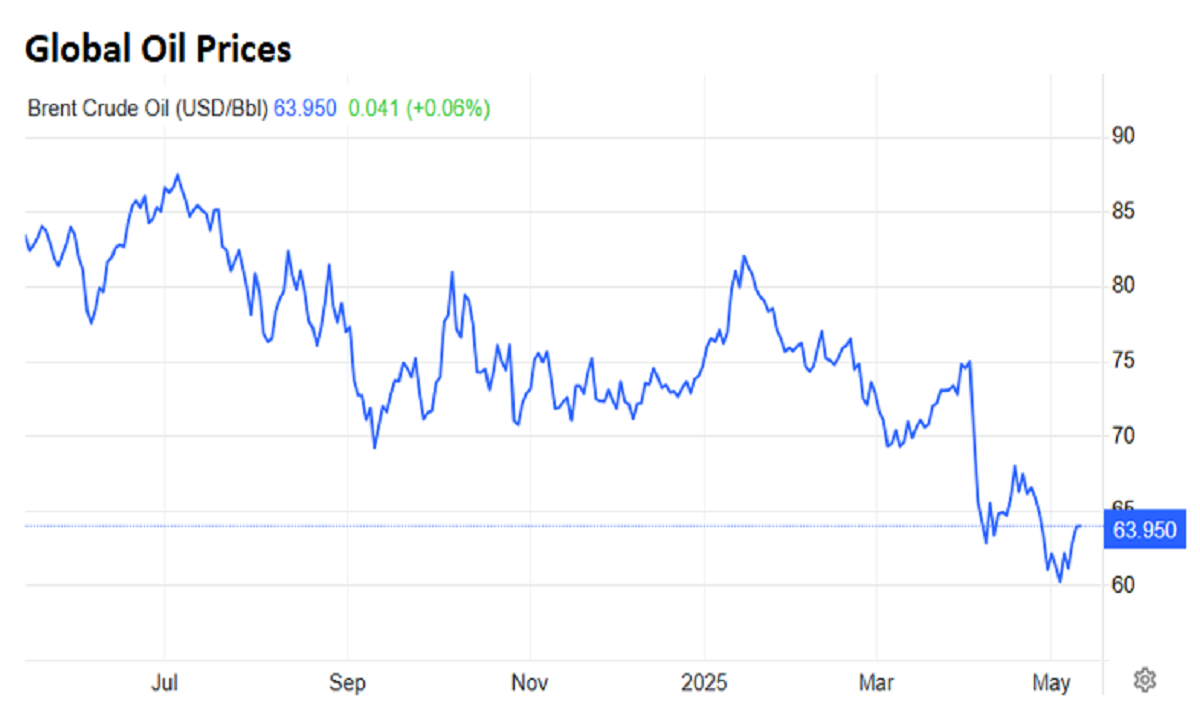Global oil prices fell to around $US60 per barrel last week after peaking above $US80 earlier this year and holding above $US70 just before “Liberation Day”.
The oil price was down by around 25% from the previous year and was half the towering peaks achieved in early 2022.

The downturn reflects fears about the global economic outlook in the midst of the trade war, OPEC+’s decision to reopen the taps, and underlying increases in production outside of the cartel.
Global oil prices rose almost 2% on Friday and notched their first weekly gains since mid-April as a US trade deal with the UK turned in investor optimism ahead of talks between top officials from Washington and Beijing.
The Brent crude price rose by US$1.07, or 1.7%, to US$63.91 a barrel but remained well down over the year.
While lower oil prices may not be beneficial for all countries or regions, they can significantly alleviate the symptoms of the trade war.
If higher tariffs represent a negative supply shock, falling energy prices—when induced by growing supplies—represent a positive supply shock for the global economy. The most obvious source of comfort is the immediate drag of lower oil prices on inflation.
The IMF estimates that a sustained 10% drop in oil prices tends to lower global inflation by 0.4 ppts in the first year, potentially lifting global GDP growth by 0.1-to-0.2 ppts over two years (assuming that the drop in prices is due to supply factors).
The downdraft in energy prices should, therefore, give the Reserve Bank of Australia some comfort that inflation can be contained, increasing the likelihood of deeper rate cuts.

